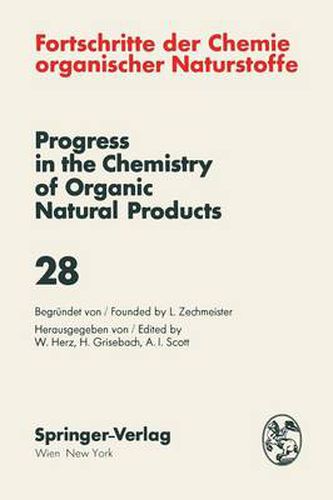Readings Newsletter
Become a Readings Member to make your shopping experience even easier.
Sign in or sign up for free!
You’re not far away from qualifying for FREE standard shipping within Australia
You’ve qualified for FREE standard shipping within Australia
The cart is loading…






This title is printed to order. This book may have been self-published. If so, we cannot guarantee the quality of the content. In the main most books will have gone through the editing process however some may not. We therefore suggest that you be aware of this before ordering this book. If in doubt check either the author or publisher’s details as we are unable to accept any returns unless they are faulty. Please contact us if you have any questions.
The cyanogenic glycosides, here defined as glycosidic derivatives of iX-hydroxynitriles, represent a rather limited class of natural products, which are widely distributed in the plant kingdom and, to a small ex- tent, even in animals. A characteristic feature of these glycosides is their ability to release hydrocyanic acid on treatment with dilute acids or appropriate enzymes. The term cyanogenic is used to designate this property, regardless of whether pure substances, plants, or animals, are serving as the source. In the latter cases the term cyanophoric is occasionally employed synonymously. Cyanogenesis in plants was probably first discovered by SCHRADER in 1803 (Io3) working with bitter almonds. In 1830, ROBIQUET and BOUTRON-CHARLARD (IOO) succeeded in isolating the parent glycoside, namely amygdalin. Over the years, a total of 18 cyanogenic glycosides have been isolated and characterized more or less completely (Table I, p. 76). It will be noted that the majority of these compounds has been isolated in the era of classical organic chemistry and that progress in .discovering new compounds, not to mention new structural types, has been surprisingly slow. It is worth remembering here that the mechanism *of cyanogenesis has been established only in the minority of known cyanogenic species. The cyanogenic glycosides have last been reviewed in 1958 by DILLE- MANN (36). Since then, no complete reviews in this field have appeared. It is the purpose of the present article to survey the more recent ad- vances and, hopefully, to stimulate continued interest in these interesting .compounds.
$9.00 standard shipping within Australia
FREE standard shipping within Australia for orders over $100.00
Express & International shipping calculated at checkout
This title is printed to order. This book may have been self-published. If so, we cannot guarantee the quality of the content. In the main most books will have gone through the editing process however some may not. We therefore suggest that you be aware of this before ordering this book. If in doubt check either the author or publisher’s details as we are unable to accept any returns unless they are faulty. Please contact us if you have any questions.
The cyanogenic glycosides, here defined as glycosidic derivatives of iX-hydroxynitriles, represent a rather limited class of natural products, which are widely distributed in the plant kingdom and, to a small ex- tent, even in animals. A characteristic feature of these glycosides is their ability to release hydrocyanic acid on treatment with dilute acids or appropriate enzymes. The term cyanogenic is used to designate this property, regardless of whether pure substances, plants, or animals, are serving as the source. In the latter cases the term cyanophoric is occasionally employed synonymously. Cyanogenesis in plants was probably first discovered by SCHRADER in 1803 (Io3) working with bitter almonds. In 1830, ROBIQUET and BOUTRON-CHARLARD (IOO) succeeded in isolating the parent glycoside, namely amygdalin. Over the years, a total of 18 cyanogenic glycosides have been isolated and characterized more or less completely (Table I, p. 76). It will be noted that the majority of these compounds has been isolated in the era of classical organic chemistry and that progress in .discovering new compounds, not to mention new structural types, has been surprisingly slow. It is worth remembering here that the mechanism *of cyanogenesis has been established only in the minority of known cyanogenic species. The cyanogenic glycosides have last been reviewed in 1958 by DILLE- MANN (36). Since then, no complete reviews in this field have appeared. It is the purpose of the present article to survey the more recent ad- vances and, hopefully, to stimulate continued interest in these interesting .compounds.